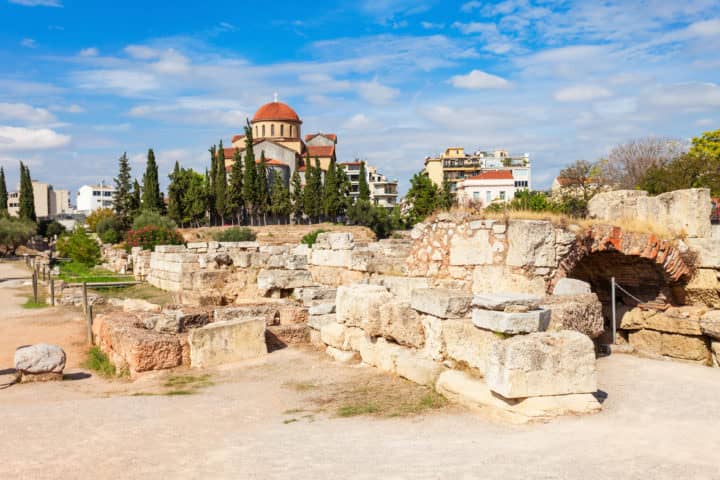 Athens, Greece is one of those cities you absolutely must visit. Not only does it have a rich history, but it is a vibrant and modern city, as well. Aside from the most popular sites like the Acropolis, there are several small museums off the tourist track that are definitely worth a visit. Although the Kerameikos Archeological Museum is a worthwhile site to see, it isn’t as popular as some of the other places. Here’s more information:
Athens, Greece is one of those cities you absolutely must visit. Not only does it have a rich history, but it is a vibrant and modern city, as well. Aside from the most popular sites like the Acropolis, there are several small museums off the tourist track that are definitely worth a visit. Although the Kerameikos Archeological Museum is a worthwhile site to see, it isn’t as popular as some of the other places. Here’s more information:
Getting to the Kerameikos Archeological Museum
Before you can visit the Kerameikos Archeological Museum, you need to make your way to Athens. Since it is a major destination, it is easy to access from anywhere in the world. For example, you can easily take a flight into this major airport. You can also drive here and even take a ferry. The port of Piraeus is close by.
Once you get to the city, you’re ready to visit the museum. Located at 148 Ermou Street in the heart of Athens, the museum is accessible by either metro (closest station is Thissiou) or by bus #49 from Omonia Square.
About the Kerameikos Archeological Museum
The Kerameikos Archeological Museum, which was built in 1937, is thought to possess the largest collection of funerary artifacts in Greece. Many of the items on display were excavated from the Kerameikos Cemetery right next door, and include objects such as urns, grave offerings like vases and jewelry, and ancient tombstones. There is also a significant collection of loutrophoroi, which is a type of inscribed pottery with an elongated neck used to hold water during funeral rituals. Additionally, there is a collection of grave reliefs depicting scenes of the dead buried there, like Ampharete and Euphoros.
Recent additions to the museum include stone sculptures of both kouros and sphinx. While they may appear more stylistically Egyptian than Greek, they were often used to commemorate the dead within their tombs.
Visiting the Kerameikos Archeological Museum
Because the Kerameikos Museum is located within the Kerameikos Archeological site, tourists can plan to spend a few hours visiting all the sites the area has to offer. While small, the museum is rich in content. Each display is well-labeled and the exhibits are laid out in chronological order. It is recommended to pay a visit to the museum first in order to gain a better understanding of funerary rites in Ancient Greece, before heading to the Kerameikos Cemetery next door.
While the Kerameikos Cemetery saw the height of its use from the 12th century BC to the 4th century AD, the oldest artifacts have been dated all the way back to the Bronze Age. Aside from the numerous funerary monuments within the cemetery, it is also a place of interest because it contains the remains of the walls that once demarcated the borders of Ancient Greece. Still standing today are the ancient Dipylon and Sacred gates, the latter of which was once the starting point of a path to the city of Eleusis- the famous site of the Eleusinian Mysteries.
The museum is open year-round, from 08:00-20:00 in the summer months, and with shortened opening hours during the winter season. Check the website for more information.
Athens is best known for its rich history and fascinating archeological monuments. No visit would be complete without seeing the Kerameikos Archeological Museum.

